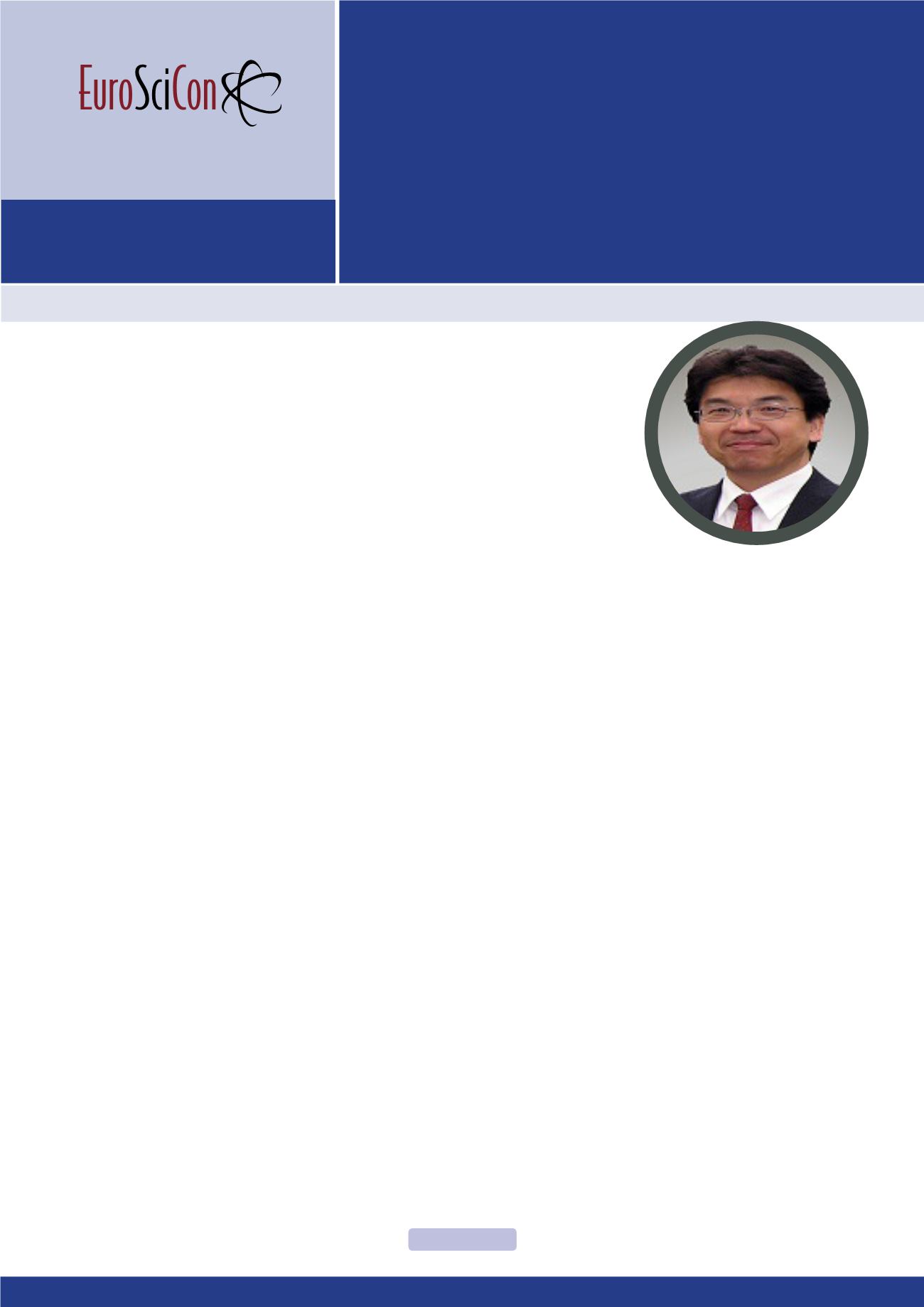

E u r o S c i C o n J o i n t E v e n t o n
Laser Optics & Photonics and
Atomic & Plasma Science
American Journal of Computer Science and Information Technology
ISSN: 2349-3917
J u l y 1 6 - 1 7 , 2 0 1 8
P r a g u e , C z e c h R e p u b l i c
Page 18
Laser Optics & Photonics and Atomic & Plasma Science 2018
G
raphene has attracted considerable attention due to its massless and gapless
energy spectrum. Carrier-injection pumping of graphene can enable negative-
dynamic conductivity in the terahertz (THz) range, which may lead to new types of
THz lasers. The dual-gate graphene channel transistor (DG-GFET) structure serves
carrier population inversion in the lateral p-i-n junctions under current-injection
pumping, promoting spontaneous incoherent THz light emission. A laser cavity
structure implemented in the active gain area can transcend the incoherent light
emission to the single-mode lasing. We designed and fabricated the distributed
feedback (DFB) DG-GFET. The DG forms the DFB cavity having the fundamental
mode,modal gainand theQfactor of 4.96THz, ~5cm
-1
, and~240, respectively.THz
emission from the sample was measured using a Fourier-transform spectrometer
witha4.2K-cooledSi bolometer. Broadband rather intense (~10~100μW) amplified
spontaneous emission from 1 to 7.6 THz and weak (~0.1~1 μW) single-mode
lasing at 5.2 THz were observed at 100K in different samples. When the substrate-
thickness dependent THz photon field distribution could not meet the maximal
available gain-overlapping condition, theDFB cavity cannot work properly, resulting
in broadband LED-like incoherent emission. To increase the operating temperature
and lasing radiation intensity, further enhancement of the THz gain and the cavity
Q factor are mandatory. Plasmonic metasurface structures promoting the super
radiance and/or instabilities as well as double-graphene-layered van der Waals
heterostructures promoting photon/plasmon-assisted resonant tunnelling are
promising for giant THz gain enhancement.
Biography
Taiichi Otsuji is a Professor at the Research Institute of Elec-
trical Communication (RIEC), Tohoku University, Japan. He has
received the PhD degree in Electronic Engineering from Tokyo
Institute of Technology, Tokyo, Japan in 1994. He has worked
at the NTT Labs from 1984 till 1999, Kyushu Institute of Tech-
nology from 1999 to 2005, and Tohoku University since 2005.
He has authored and co-authoredmore than 240 peer-reviewed
journal papers. He has been an IEEE Electron Device Society
Distinguished Lecturer in 2013. He is a Fellow of the IEEE, a
Senior Member of the OSA, and a Member of the JSAP, MRS,
and IEICE.
otsuji@riec.tohoku.ac.jpTerahertz light emission and lasing in
graphene under current-injection pumping
Taiichi Otsuji
RIEC-Tohoku University, Japan
Taiichi Otsuji, Am J Compt Sci Inform Technol 2018, Volume 6
DOI: 10.21767/2349-3917-C1-001
















